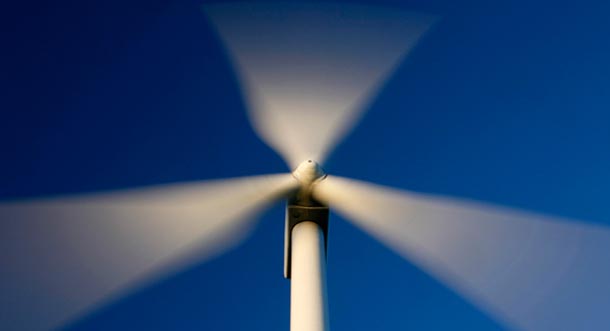
The Washington Post and New York Times picked an inopportune time to beat up on Al Gore and federal support for renewable energy.
The Post recently ran a story insinuating that Gore used his influence to steer Obama administration stimulus money to clean tech companies that he invested in--without a shred of evidence. A few days later, Post columnist Charles Lane and Times columnist David Brooks piled on, smacking Gore and denouncing the administration's green tech subsidies as corporate welfare.
Then came Hurricane Sandy, reminding us of one of the main reasons the Obama administration is encouraging renewables in the first place.
The piece that kicked off this latest round of Gore bashing, Post reporter Carol D. Leonnig's "Al Gore has thrived as a green-tech investor," was old news. The fact that Gore's personal fortune swelled dramatically after he left public office was reported five years ago by the business magazine Fast Company. And the fact that some of the companies in which Gore has invested received Energy Department grants--sparking charges that Gore is profiting from federal policies he supports--was reported by the New York Times in November 2009.
Lane seized on this outdated information in his October 16 column, "Liberals' green-energy contradictions," accusing Gore of manipulating the political process for personal gain and proclaiming his distaste for subsidies. "Government, with its inevitable susceptibility to lobbying and favoritism, should not be picking winners and losers," he wrote, "whether through green subsidies or tax breaks for oil and gas."
On October 19, Brooks jumped into the fray with "A Sad Green Story," presenting a profoundly pessimistic view of renewables' prospects. "All in all, the once bright green future is looking grimmer," he wrote. "Green tech is decidedly less glamorous, tarnished by political and technological disappointments." Brooks did acknowledge that climate change is real and green technology is "still important." And he said he supports a carbon tax, which has zero support on Capitol Hill. But, like Lane, Brooks is no fan of government subsidies.
OK, but let's deal with reality, shall we? The fact is the federal government has been subsidizing energy development for more than 200 years and has spent significantly more to promote fossil fuels than renewables. The oil and gas industry, for example, enjoyed an average of $4.86 billion in subsidies annually in today's dollars from 1918 to 2009, according to a 2011 study by DBL Investors, a venture capital firm. Meanwhile, the new kid on the block--renewables--averaged only $370 million a year in subsidies between 1994 and 2009. Yes, the 2009 stimulus package did provide $21 billion for wind, solar and other renewables, according to an October 4 Times story, but, as the story reports, "a lot of the green energy spending that went out the door on Mr. Obama's watch was authorized during the Bush administration." In any case, that support barely begins to balance the scales that have tilted toward oil and gas for nearly 100 years and coal for more than two centuries.
So the question is not whether the government should support energy. It clearly has a role to play. The question is whether the government should continue to underwrite extremely profitable, mature industries--especially polluting ones--at the expense of nurturing new, promising low-carbon alternatives. The obvious answer is no.
Brooks gloomy assessment, meanwhile, is not borne out by the facts. Over the last five years--with the help of production tax credits, stimulus spending and state renewable electricity standards--the nascent wind and solar sectors have doubled their electricity output, employment and private investment. Even with a deep recession and slow recovery, U.S.-based wind turbine, blade, tower and gearbox manufacturing has jumped 25 to 60 percent since 2005.
Glamorous or not, the potential for renewables is tremendous. They currently generate about 5 percent of U.S. electricity, but by 2030 they could produce more than 40 percent, half coming from wind, according to the Union of Concerned Scientists. That would just about replace the share currently generated by coal, which is responsible for more than 80 percent of U.S. utility sector carbon emissions. The Energy Department's National Renewable Energy Laboratory also is bullish on renewables. Earlier this year, it published a report that concluded today's commercially available renewable technologies could easily generate 80 percent of U.S. electricity by 2050.
Lane and Brooks should know better. Maligning Al Gore for making shrewd investments is silly. But trying to poison public opinion about the need to promote clean energy alternatives with what we know about climate change? That's irresponsible.
Elliott Negin is the director of news and commentary at the Union of Concerned Scientists.
